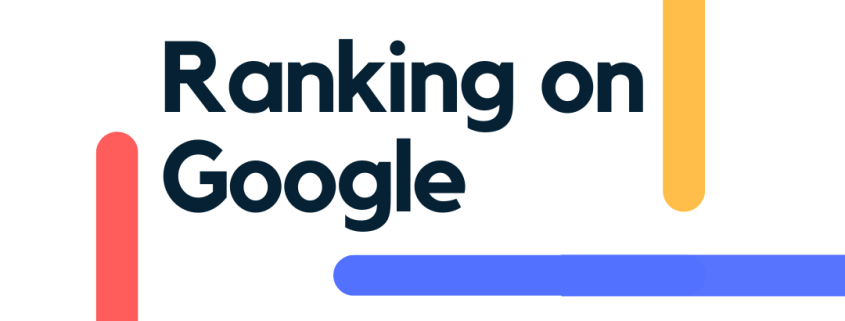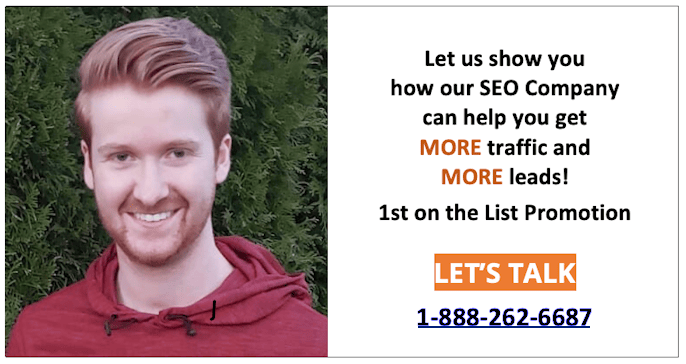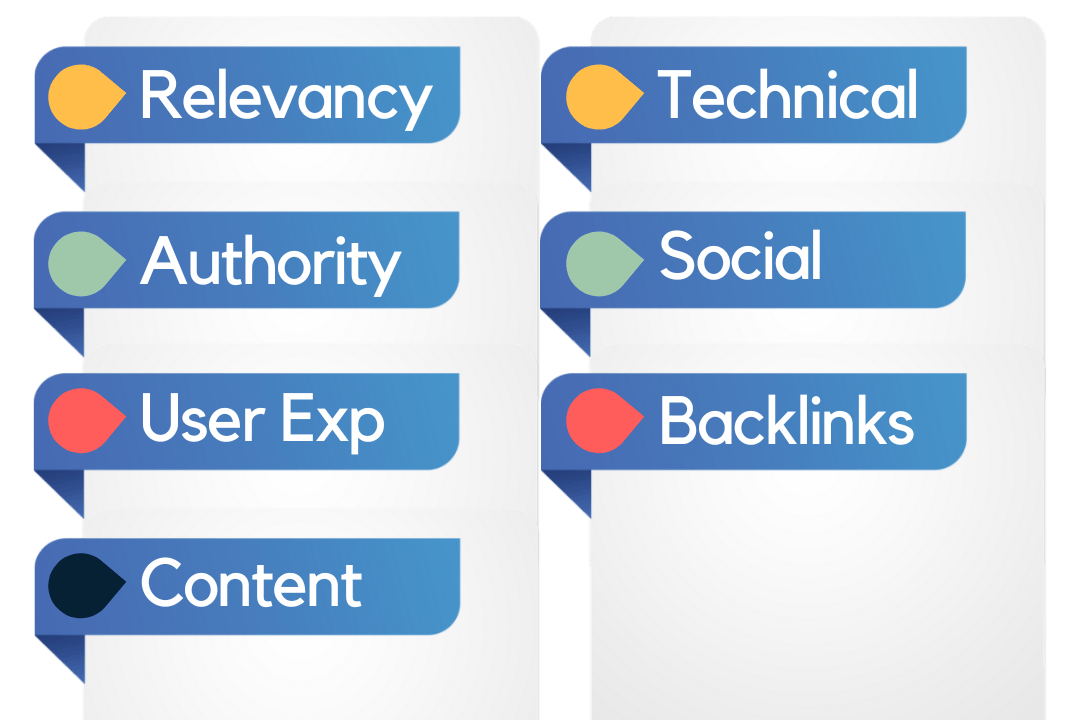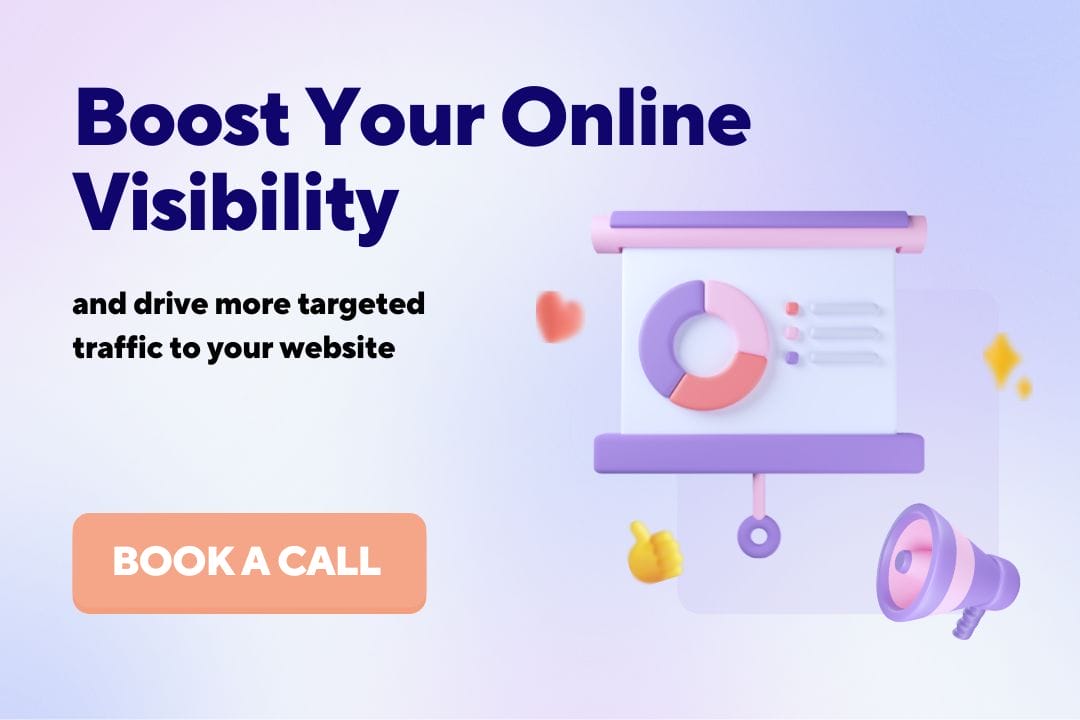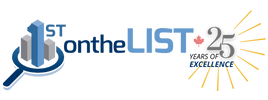How to Rank on Google for Beginners – 7 Key SEO Factors
How to Rank Higher on Google
“Ranking on Google” refers to the position that a website appears in the search engine results pages (SERPs) when a user conducts a search.
When a user types a query into the search bar, Google’s algorithm will return a list of relevant websites, ranked in order of relevance and importance.
The higher a website appears on the SERP, the more likely it is to be seen and clicked on by the user. The common phrase used to describe this is “search engine optimization” or “SEO”.
Search Engine Optimization (SEO) is an essential aspect of digital marketing.
However, understanding how to optimize your website for search engines can be a daunting task.
In this article, we will be discussing the 7 key SEO factors that can help to improve your website’s ranking on Google.
7 SEO Factors for Ranking Higher on Google
- Relevance: Google wants to ensure that the content on your website is relevant to the search query. This means that you should use keywords in your content that match the search query and provide valuable information to the user.
- Authority: Google wants to see that your website is an authority on the topic. This can be achieved by having a lot of high-quality content on your website and by having other websites link to your site.
- User experience: Google wants to ensure that users have a good experience when visiting your website. This means that your website should be easy to navigate, load quickly, and be mobile-friendly. See our blog post What Does User Experience Mean? for more on this topic.
- Content quality: Google wants to see high-quality content on your website. This means that your content should be well-written, informative, and provide value to the user.
- Technical SEO: Google wants to see that your website is technically sound. This means that your website should be free of errors, have a clear structure, and be properly optimized for search engines. A Technical SEO Audit is one of the first things we do for our clients.
- Social signals: Google takes into account the number of shares and likes your website receives on social media. For more info, visit our Social Media page.
- Backlinks: Google wants to see that other websites are linking to your website. The more high-quality backlinks you have pointing to your site, the higher your website will rank.
Expert Quote on the Importance of Ranking on Google
“Ranking on Google is like having the best storefront on the busiest street in town. It’s all about visibility and accessibility. When you rank well on Google, it means more people can find you easily, and that’s how you grow your business.”
Keiran Griffiths, President of 1st on the List
Relevancy
When it comes to ensuring that your content is relevant to the search query, there are several key strategies that beginners can implement to improve their ranking on Google.
First and foremost, it is important to conduct thorough keyword research to identify the specific keywords and phrases that your target audience is searching for.
This can be done using tools such as Google Keyword Planner or SEMrush, which provide data on search volume, competition, and related keywords.
Once you have identified your target keywords, it is important to include them in your content in a natural and relevant way.
This includes incorporating them into your headlines, meta tags, and throughout the body of your content.
Additionally, it is important to ensure that your content is informative, valuable, and provides real solutions to the user.
This means that your content should be well-researched, well-written, and provide relevant information that addresses the user’s search query.
It should also be structured and easy to read, with proper formatting, headings, and subheadings, but more on that later.
In summary, to ensure that your content is relevant to the search query and improve your ranking on Google, beginners should conduct thorough keyword research, include keywords in a natural and relevant way throughout their content, provide valuable, informative, and well-structured content, have a clear and logical website structure, and ensure that their website is mobile-friendly. Remember that SEO is a continuous process and you should always be monitoring and updating your content to ensure it stays relevant to the search query.
Authority
Showing authority on your website is an important aspect of SEO and can help to improve your Google ranking. Authority is a key consideration from Google’s Quality Guideline Raters. These raters use a format referred to as E.A.T. (Expertise, Authoritativeness, and Trust) to help determine the quality of a website. Here is a step-by-step guide for beginners on how to showcase your authority on your site:
- Conduct thorough research: Before you start creating content, it’s important to conduct thorough research on your industry and the topics you want to write about. This will help you to create high-quality, informative content that establishes you as an authority in your field.
- Create high-quality, in-depth content: Once you have your research, you can start creating high-quality, in-depth content that covers your topic in detail. This content should be well-researched, well-written, and provide real value to your audience.
- Optimize your content for search engines: Once you have high-quality content, you need to optimize it for search engines. This includes using your target keywords in your headlines, meta tags, and throughout the body of your content.
- Use internal linking: Internal linking is a great way to showcase your authority by linking to other relevant content on your website. This helps to create a clear structure and hierarchy of your content, making it easy for search engines to understand the relevance of each page.
- Keep your website updated: Google likes to see websites that are kept up-to-date with fresh and relevant content. Make sure to regularly update your website with new and relevant content to keep your audience engaged and establish your authority.
In summary, Showcasing your authority on your website is crucial for SEO and can help to improve your Google ranking. Beginners can do this by conducting thorough research, creating high-quality, in-depth content, optimizing their content for search engines, using internal linking, and keeping their websites updated with fresh and relevant content.
Content Writing & Optimization
Writing and optimizing content for ranking on Google is a critical aspect of SEO. Here is a step-by-step guide for beginners on how to write and optimize content for SEO:
- Conduct thorough keyword research: Before you start writing your content, it’s important to conduct thorough keyword research. This will help you to identify the specific keywords and phrases that your target audience is searching for and ensure that your content is optimized for those keywords.
- Create a content strategy: Once you have your keywords, you can create a content strategy that includes the topics you want to write about, the type of content you want to create, and the keywords you want to target.
- Write high-quality, in-depth content: Once you have your content strategy, you can start writing high-quality, in-depth content that covers your topic in detail. This content should be well-researched, well-written, and provide real value to your audience. Here is a guide to help you write effective content for your website.
- Optimize your content for search engines: As you write your content, it’s important to optimize it for search engines. This includes using your target keywords in your headlines, meta tags, and throughout the body of your content. Use variations of keywords, and make sure your headlines are relevant and catchy.
- Use internal linking: As you write your content, it’s important to use internal linking to other relevant pages on your website. This helps to create a clear structure and hierarchy of your content, making it easy for search engines to understand the relevance of each page.
- Optimize your images and videos: Optimizing your images and videos can help to improve your SEO. Make sure to use descriptive file names, add alt tags, and compress your images to reduce their file size.
- Use meta tags: Meta tags are used to provide information about your website to search engines. Make sure to use meta tags for your title and description, and include your target keywords.
- Submit your sitemap: Once your content is published, make sure to submit your sitemap to Google. This will help Google to find and crawl your new content.
- Keep your content updated: Google likes to see websites that are kept up-to-date with fresh and relevant content. Make sure to regularly update your content with new information and new keywords to keep your audience engaged and improve your SEO.
In summary, Writing and optimizing content for SEO is a critical aspect of SEO. Beginners can do this by conducting thorough keyword research, creating a content strategy, writing high-quality, in-depth content, optimizing their content for search engines, using internal linking, optimizing their images and videos, using meta tags, submitting their sitemap, monitoring their performance and keeping their content updated with fresh and relevant information.
Expert Quote on the Importance of Content
“At the end of the day, it all comes down to quality and unique content. Google’s algorithm is designed to favor websites that provide valuable, informative and well-written content. As a senior content specialist, my quick tip is to always focus on creating high-quality, original content that provides real value to your audience. This will not only improve your SEO, but it will also help to establish you as a thought leader in your industry.”
Tony Hutchcroft, Senior Content Optimizer
User Experience (UX)
Improving the user experience (UX) on your website is an important aspect of SEO and can help to improve your Google ranking. Here are some tactical tips that beginners can implement on their website to improve UX:
- Make your website easy to navigate: A clear and intuitive navigation structure is essential for improving user experience. Use simple and consistent navigation labels, and make sure that all of the important pages on your website are easily accessible.
- Use a mobile-friendly design: With more and more people using their mobile devices to access the internet, it’s essential that your website is mobile-friendly. This means that your website should be designed to be easily readable and navigable on a variety of devices, including smartphones and tablets.
- Improve website speed: A slow-loading website can be frustrating for users and can lead to high bounce rates. Optimize images, minify your code, and use a content delivery network (CDN) to help improve website speed.
- Make your website easy to read: Use a clean and simple design, and make sure that the text on your website is easy to read. Use a readable font, appropriate font size, and sufficient line spacing.
- Use clear calls to action: Make it easy for users to take action on your website. Use clear and prominent calls to action, such as “buy now” or “subscribe,” to guide users through the process.
- Make use of white space: Using white space effectively can make your website more visually appealing and easier to navigate. It can also help to draw attention to important elements on your website.
- Make use of images and videos: Images and videos can help to improve the user experience on your website by making it more visually appealing and engaging. Use high-quality images and videos, and make sure they are optimized for the web.
- Use a clear and simple layout: Use a clear and simple layout for your website, and make sure that the most important elements are prominently displayed.
- Make use of customer feedback: Encourage your customers to provide feedback on your website, and take that feedback into account when making improvements to your website.
- Test your website: Test your website on different devices and browsers to make sure that it is functioning properly and providing a good user experience.
In summary, Improving the user experience (UX) on your website is an important aspect of SEO and can help to improve your Google ranking. Beginners can implement on their website by making it easy to navigate, mobile-friendly, fast-loading, easy to read, having clear calls to action, using white space, using images and videos, using a clear and simple layout, making use of customer feedback and testing their website.
Expert Quote on the Importance of User Experience
“A website that is fast and easy to use is a website that will keep visitors engaged and coming back for more. As a WordPress developer, my quick tip for beginners is to focus on site speed optimization in order to improve user experience. This includes things like reducing the size of images, minifying code and using a Content Delivery Network. By prioritizing site speed, you will not only improve user experience, but also increase the chances of your site ranking well on search engines.”
Michael Mitov, WordPress Developer & Site Speed Specialist
Technical SEO
Technical SEO is an important aspect of search engine optimization and refers to the technical aspects of a website that can affect its ability to rank well on search engines. Here is a list of technical SEO factors that beginners should be aware of:
- Website structure and architecture: The structure and architecture of a website play a critical role in how search engines crawl and index a website. It is important to have a clear and organized website structure, with a hierarchy of pages and easy navigation.
- Mobile optimization: With the increasing number of mobile users, it is essential that your website is mobile-friendly and optimized for different devices. This includes using a responsive design and making sure that your website loads quickly on mobile devices.
- Sitemap and robots.txt: Submitting a sitemap to search engines and using a robots.txt file to control which pages on your website are indexed can help to improve the crawling and indexing of your website.
- URL structure: The structure of your website’s URLs can impact how easily search engines can crawl and index your website. It is important to use clear and concise URLs that include keywords and are easy to read.
- Meta tags: Meta tags provide information about your website to search engines. It is important to include meta tags for title and description and include your target keywords.
- Canonical tags: Canonical tags help to prevent duplicate content issues by specifying the preferred version of a webpage.
- Redirects: Redirects can help to prevent 404 errors and ensure that users are directed to the correct page.
- Schema markup: Schema markup helps to provide additional information about your website to search engines, making it easier for them to understand the content on your website.
- HTTPS: Google has announced that HTTPS is a ranking signal. A secure website is more likely to rank better than an insecure one.
In summary, Technical SEO is an important aspect of search engine optimization and refers to the technical aspects of a website that can affect its ability to rank well on search engines. Beginners should be aware of Website structure and architecture, mobile optimization, sitemap and robots.txt, URL structure, meta tags, canonical tags, redirects, schema markup, and HTTPS.
Expert Quote on the Importance of Technical SEO
“Technical SEO is the foundation of any successful SEO strategy. Without it, your website may not be optimized for search engines, making it harder for your target audience to find you. As a technical SEO expert, my quick tip for beginners is to start by performing a technical audit of your website to identify any issues that may be preventing your website from ranking well. This can include things like broken links, missing alt tags, and duplicate content, among others. Fixing these issues is an essential step in optimizing your website for search engines.”
Angela Tucker, Senior Technical SEO Specialist
Social Proof
Social proof is a powerful tool that can help to improve your Google ranking by showcasing positive feedback and testimonials from your customers. Here is a guide on how to implement social proof on your website to improve your Google rankings:
- Gather customer testimonials: The first step in implementing social proof on your website is to gather customer testimonials. These can be in the form of written testimonials, video testimonials, or even just a simple rating system.
- Display testimonials prominently: Once you have your testimonials, it’s important to display them prominently on your website. This can be done by adding them to your homepage, including them on your product or service pages, or even creating a dedicated testimonials page.
- Use social media reviews: Social media is a great place to gather customer feedback and reviews. Make sure to include a link to your social media profiles on your website, and encourage customers to leave reviews on your social media pages.
- Use trust badges: Trust badges are small icons that indicate that your website is secure or that you have a good reputation. This can help to increase the trust that users have in your website and improve your conversion rates.
- Showcase your awards and certifications: If you have won any awards or certifications, make sure to showcase them on your website. This can help to establish your authority and increase the trust that users have in your website.
- Use customer photos and videos: Photos and videos of your customers can be a powerful form of social proof. This can be done by featuring customer photos on your website or even creating a customer video testimonial.
- Use numbers: Showcasing the number of customers, or the number of positive reviews can be a powerful form of social proof.
- Make sure your reviews are authentic: Be sure to use only authentic reviews, not fake ones. Google can penalize websites for using fake reviews.
- Monitor your reviews and feedback: Regularly check your reviews and feedback, both on your website and on social media, and respond to them promptly. This can help to improve your reputation and increase the trust that users have in your website.
In summary, Implementing social proof on your website is a powerful tool that can help to improve your Google ranking by showcasing positive feedback and testimonials from your customers. Beginners can do this by gathering customer testimonials, displaying them prominently, using social media reviews, using trust badges, showcasing awards and certifications, using customer photos and videos, using numbers, making sure the reviews are authentic, and monitoring your reviews.
Backlinking
Acquiring backlinks is an important aspect of SEO and can help to improve your ranking on Google. Here is a step-by-step guide on how to acquire backlinks that can improve your ranking on Google:
- Create high-quality, in-depth content: The first step in acquiring backlinks is to create high-quality, in-depth content that provides real value to your audience. This type of content is more likely to be shared and linked to by other websites.
- Reach out to other websites: Once you have your high-quality content, reach out to other websites that are relevant to your industry or niche and ask them to link to your content. This can be done by emailing the website owner, reaching out on social media, or using a link-building tool.
- Guest posts on relevant websites: Guest posting on relevant websites is a great way to acquire backlinks. This can be done by writing an article for a relevant website and including a link back to your website in the author bio.
- Participate in online communities: Participating in online communities, such as forums and social media groups, is a great way to acquire backlinks. This can be done by providing valuable information or resources and including a link back to your website.
- Create infographics: Infographics are a great way to acquire backlinks because they are easy to share and link to. Create an infographic that is relevant to your industry or niche, and include a link back to your website.
- Use social media: Use social media to promote your content and acquire backlinks. Share your content on social media, and include a link back to your website.
- Use broken link checker tools: Use broken link checker tools to find broken links on other websites. Once you find a broken link, reach out to the website owner and offer them a link to your website as an alternative.
- Create a useful tool: Create a useful tool, such as a calculator or a quiz, that is relevant to your industry or niche. Make sure to include a link back to your website in the tool.
- Use internal linking: Use internal linking to link to other pages on your website from within your content. This can help to increase the number of links pointing to your website.
- Monitor your backlinks: Use tools like Ahrefs or Majestic to monitor your backlinks and keep track of new links that point to your website.
In summary, Acquiring backlinks is an important aspect of SEO and can help to improve your ranking on Google. Beginners can do this by creating high-quality, in-depth content, reaching out to other websites, guest posting on relevant websites, participating in online communities, creating infographics, using social media, using broken link checker tools, creating a useful tool, using internal linking and monitoring their backlinks.
Expert Quote on the Importance of Building Links
“Backlinks are the backbone of SEO. They are a crucial factor in determining a website’s search engine ranking and help to establish a website’s authority and credibility. As a link building expert, my quick tip for beginners is to use Help a Reporter Out (HARO) as a tool to acquire backlinks. By connecting with journalists and providing expert insights or quotes for their articles, you can not only increase your visibility but also acquire valuable backlinks to your website.”
Jonathan Kelly, Senior Link Acquisition Specialist
Common Questions Our Clients Ask About How to Rank Higher on Google
How does Google rank websites? Google uses a complex algorithm to rank websites based on a variety of factors, including the relevance and quality of the content, the number of backlinks, and the user experience.
Does optimizing my website improve Google Maps’ ranking? Optimizing a website for SEO can improve Google Maps rankings to some extent as it involves improving the visibility and credibility of the website which are important ranking factors for Google Maps. However, Google Maps ranking also takes into consideration other factors such as location, relevance, and user engagement. So it is important to optimize your website as well as your Google My Business (Google Business Profile) listing and keep track of your reviews and ratings.
How long does it take to rank #1 on Google? The time it takes to rank #1 on Google can vary greatly depending on a number of factors, including the competitiveness of your industry, the quality and relevance of your content, and the strength of your website’s backlink profile. Some websites may see results in as little as a few months, while others may take 8 – 12 months or even longer to achieve a top-ranking position.
Do I need to hire an SEO agency to rank on Google? It is not necessary to hire an SEO agency to rank on Google, as there are many strategies and tactics that you can implement on your own to improve your website’s visibility and ranking. However, an SEO agency can provide expertise and resources that can help to accelerate the process and achieve better results.
Download Our Free 5 Actionable Tips for Ranking on Google
Want to learn the secrets to ranking on Google? Our 5 tips for ranking on Google infographic is an excellent resource for anyone looking to improve their search engine visibility. Inside, you’ll find actionable, easy-to-implement tips and strategies to help you boost your search engine rankings and drive more targeted traffic to your website. Don’t miss out on this opportunity to take your SEO efforts to the next level. Download our 5 tips for ranking on Google infographic PDF now and start seeing results!
5 Tips for Ranking on Google – Infographic
Are you struggling to rank on Google and grow your online visibility?
At 1st on the List, we have a long track record of helping clients achieve top rankings on Google and improve their online visibility. Our team of SEO experts uses the latest techniques and strategies to help you achieve your goals. Whether you’re a small business just starting out or a large corporation looking to improve your online presence, we have the expertise and resources to help you succeed. Don’t let your competitors outrank you on Google.
Contact us today to learn more about our services and how we can help you to achieve top rankings and grow your online visibility!
Call us toll-free at 1-888-262-6687

